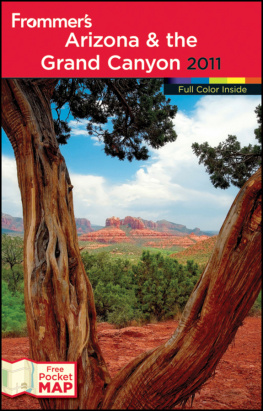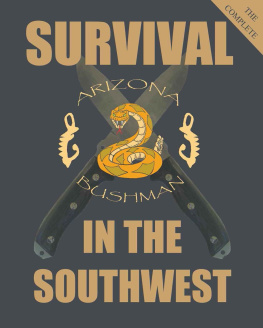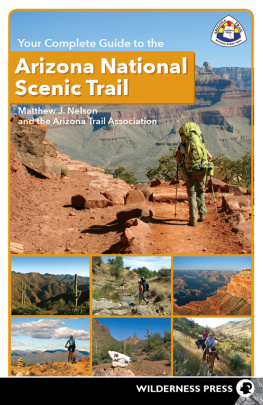ACKNOWLEDGMENTS
The author wishes to thank the following for their invaluable assistance in identifying the more difficult plant subjects:
Dick Anderson, Chiricahua National Monument
Arizona-Sonora Desert Museum Botany Department, Tucson
Michael Bencic, Wupatki National Monument
Dr. Susann Biddulph
Jane Cole, Desert Botanical Garden, Phoenix
Dr. Carol Crosswhite, Boyce Thompson Southwestern Arboretum
Robert Dyson, Alpine Ranger District
Karen Foster, Saguaro National Park West
Peggy Lu Gladhill, Alpine Ranger District
Wendy Hodgson, Desert Botanical Garden, Phoenix
Philip D. Jenkins, The University of Arizona, Tucson
Ron Kearns, Kofa Mountain Wildlife Refuge
Les Landrum, Arizona State University, Tempe
Dr. Charles Mason, The University of Arizona, Tucson
Sandy Mcmahan, Saguaro National Park West
Vince Ordonez, Apache-Sitgreaves National Forest
Barbara Phillips, Coconino National Forest
Dr. Donald J. Pinkava, Arizona State University, Tempe
Patrick Quirk, Desert Botanical Garden, Phoenix
Roy Simpson, Chiricahua National Monument
Kathy Warren, Grand Canyon National Park
ARIZONAS LIFE ZONES
The diversity of plant life in Arizona spans six main life zones, from a low point of 70 feet near Yuma to a high point of 12,670 feet in the San Francisco Peaks near Flagstaff. Although certain species characterize specific zones, others frequently overlap several zones. The contour of the landcanyons or mountain slopesalso influences the variety of flora within a zone. Rainfall, too, greatly affects life within a given environment. Thus, life zones are merely guides, rather than well-defined territories. Climbing 1,000 feet approximates traveling northward about 300 miles and results in a temperature drop of about five degrees.
The Lower Sonoran Zone is situated below 4,500 feet. Here, creosote, jojoba, paloverde, mesquite, ironwood, saltbush, bursage, and cacti abound. The plants in this zone endure high temperatures and low precipitation. Spring annuals survive as seeds, some for decades. When temperatures are just right and rainfall in the fall and winter (January and February) is sufficient, the seeds germinate. These so-called ephemerals (of very short duration) develop quickly, burst into blossom, then soon go to seed. In contrast, paloverde, mesquite, ironwood, and bursage survive desert conditions because of their reduced leaf area. Others, such as jojoba and creosote, have specialized leaves for desert survival, while the ocotillo and brittlebush shed their leaves entirely during drought conditions. Still others, such as the cacti and certain bushes, have vestigial leaves or have modified their leaves to spines over evolutionary time.
The Upper Sonoran Zone ranges from 4,500 to 6,500 feet. At these elevations rainfall is more plentiful. Here, grasslands and sagebrush, as well as woodlands of oak, juniper, and pinyon pine are found. Here, too, lie large areas of chaparral with thickets of manzanita.
Between 6,500 and 8,000 feet lies the Transition Zone. Abundant rainfall at these altitudes produces huge stands of ponderosa pines. Scattered among these pines grow junipers, Gambel oaks, and Douglas firs.
The Canadian Zone, at 8,000 to 9,500 feet, is the province of cool, moist, fir forests. Douglas fir dominates this zone, with a mixture of blue and Engelmann spruce, quaking aspen, and white or subalpine fir.
Within the Hudsonian Zone (9,500 to 11,500 feet) grow spruce, fir, and bristlecone pines. These trees are usually stunted due to a short growing season; often they are twisted from the windy conditions found at these higher elevations.
The Alpine Zone, at above 11,500 feet, is represented on the San Francisco Peaks by sedges, lichens, grasses, and alpine wildflowers. It is above the timberline.
Each of the above zones is rich in wildflowerssome species are unique to a certain zone; others are present in several zones.
REFERENCES
Anderson, Edward F. The Cactus Family. Portland, OR: Timber Press, 2001.
Anderson, J.L. Vascular Plants of Arizona: Anacardiaceae, in CANOTIA: An Arizona journal publishing botanical and mycological papers, vol. 3, issue 2, pp. 110.
_______. Vascular Plants of Arizona: Ericaceae, in CANOTIA: An Arizona journal publishing botanical and mycological papers, vol. 4, issue 2, pp. 110.
Arizona-Nevada Academy of Science Editorial Committee, eds. A New Flora for Arizona in Preparation. Vol. 26(1), 1992, pp. 2228, 3641; vol. 27(2), 1994, pp. 164168, 190194, 222236, 241245; vol. 29(1), 1995, pp. 612, 1314, 2938, 3962; vol. 30(2), 1998, pp. 6183, 8495; vol. 32(1), 1999, pp. 121, 3247, 5254; vol. 33(1), 2001, pp. 5057, 5864, 6972.
Arnberger, Leslie P. Flowers of the Southwest Mountains. Globe, AZ: Southwestern Monuments Association, 1962.
Baerg, Harry J. How to Know the Western Trees. Dubuque, IA: C. Brown Company Publishers, 1973.
Bair, A., M. Howe, D. Roth, R. Taylor, T. Ayers, and R.W. Kiger. Vascular Plants of Arizona: Portulacaceae, in CANOTIA: An Arizona journal publishing botanical and mycological papers, vol. 2, issue 1, pp. 122.
Baker, Marc. A multivariate study of morphological characters for Echinocactus horizonthalonius and E. texensis (Cactaceae) (first draft report, School of Life Sciences, Arizona State University, Tempe, AZ, 2007). www.fws.gov/southwest/federal_assistance/PDFs/NicholsTurksheadcactusmorphologyAZE-6-9.pdf Feb. 25, 2009.
Bates, S.T., F. Farruggia, E. Gilbert, R. Gutierrez, D. Jenke, E. Makings, E. Manton, Chiang, F., and L. R. Landrum. Vascular Plants of Arizona: Solanaceae Part Three: Lycium L. Wolfberry, Desert Thorn, in CANOTIA: An Arizona journal publishing botanical and mycological papers, vol. 5, issue 1, pp. 110.
Benson, Lyman. The Cacti of Arizona. Tucson, AZ: University of Arizona Press, 1969.
Benson, Lyman, and Robert A. Darrow. Trees and Shrubs of the Southwest Deserts. Tucson, AZ: University of Arizona Press, 1981.
Bernard, Nelson T. Wildflowers Along Forest and Mesa Trails. Albuquerque, NM: University of New Mexico Press, 1925.
Bowers, Janice Emily. 100 Desert Wildflowers of the Southwest. Tucson, AZ: Southwest Parks and Monuments Association, 1989.
_______. 100 Roadside Wildflowers of Southwest Woodlands. Tucson, AZ: Southwest Parks and Monuments Association, 1987.
Christie, K., M. Currie, L. S. Davis, M-E. Hill, S. Neal, and T. Ayers, Vascular Plants of Arizona: Rhamnaceae, in CANOTIA: An Arizona journal publishing botanical and mycological papers, vol. 2, issue 1, pp. 124.
Coombes, Allen J. Dictionary of Plant Names. Portland, OR: Timber Press, 1990.
Craighead, John J., Frank C. Craighead Jr., and Ray J. Davis. A Field Guide to Rocky Mountain Wildflowers. Boston, MA: Houghton Mifflin Company, 1963.
Crittenden, Mabel. Trees of the West. Millbrae, CA: Celestial Arts, 1977.
Crittenden, Mabel, and Dorothy Telfer. Wildflowers of the West. Millbrae, CA: Celestial Arts, 1975.
Desert Botanical Garden Staff. Arizona Highways Presents Desert Wildflowers. Phoenix, AZ: Desert Botanical Garden, 1988.
Dodge, Natt N. 100 Desert Wildflowers in Natural Color. Globe, AZ: Southwestern Monuments Association, 1963.
_______. Flowers of the Southwest Deserts. Globe, AZ: Southwestern Monuments Association, 1969.
_______. 100 Roadside Wildflowers of Southwest Uplands in Natural Color. Globe, AZ: Southwestern Monuments Association, 1967.
Elias, Thomas S. The Complete Trees of North America. New York: Van Nostrand Reinhold, 1980.





